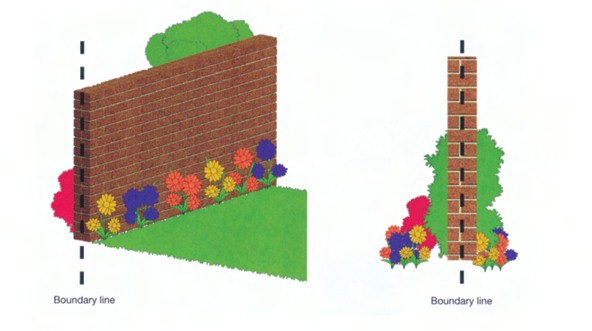PARTY WALL ACT
What is a Party Wall?
A Party Wall separates the buildings of two different owners. The wall may stand astride the boundary or be entirely on one owner's land.
The Party Wall Act etc 1996 recognises two types of wall:
What is a Party Wall - Type A?
A Type A Party Wall forms part of a building and stands on lands of different owners, i.e the wall stands astride the boundary. Examples include walls separating terraced or semi-detached houses or a wall that forms the boundary between two gardens, which is referred to as a 'party fence wall'.

What is a Party Wall - Type B?
A Type B Party Wall stands wholly on one owner's land, but is used by two (or more) owners to separate their buildings. An examples is where a neighbour has a structure, such as a garage, that butts up against a wall that is owned by the other neighbour. Only the part of the wall that does the separating is a Party Wall with the wall above or to the side not being a Party wall.

What is a Party Fence Wall?
A "party fence wall" is not part of a building. It stands astride the boundary line between lands of different owners and is used to separate those lands. This would include a garden wall but, despite the name, excludes wooden fences, or fences with concrete posts.
